 |
If you prefer, you can download the PDF of this Talent Pulse Briefing. |
When any signs of an economic downturn begin to surface, employers are caught wondering how to navigate their workforce through it and not lose their shirt. While some would argue that we are already in a recession, the reality is that the jury is still out on where our current path will lead. While the unknown can be absolutely daunting for employers, there is hope. We may not be able to predict the future, but what we can do is plan. We can stabilize our workforce strategies. We can be ready.
Are we headed for recession? The predictions are mixed.
One of the most common measures of economic health, the gross domestic product (GDP), decreased 0.9% annually in the second quarter of 2022. As this is the second consecutive GDP contraction, this would normally signal recession. However, there are contradictory indicators at work, including the lowest unemployment rate in 50 years and a strong jobs market. Jobs increased by 528,000 in July, according to the latest employment report from the Bureau of Labor Statistics (BLS). This was significantly more than experts had forecast, and the strongest figures since before the pandemic.
Employers will have to stay on their toes to ensure that they don’t end up behind the curve. Even before the pandemic, drivers were set in motion that are reverberating and growing in importance. With an imbalance of newly skilled workers to replace those who retire and a shifting landscape in terms of what workers want, and it’s clear something will have to change — recession or not—regarding your talent strategy.
One of the many economic indicators to consider is the Purchasing Managers’ Index (PMI), which measures the performance of the manufacturing sector. While the PMI did grow in May and June of this year, the rate of growth slowed noticeably. This may echo what happened in 2019, when manufacturing was extremely strong in the first two quarters, then fell dramatically in Q3. However, this did not signal a recession—the number began to rise again in early 2020. Of course, the pandemic interrupted the trajectory in March, turning everything upside down.
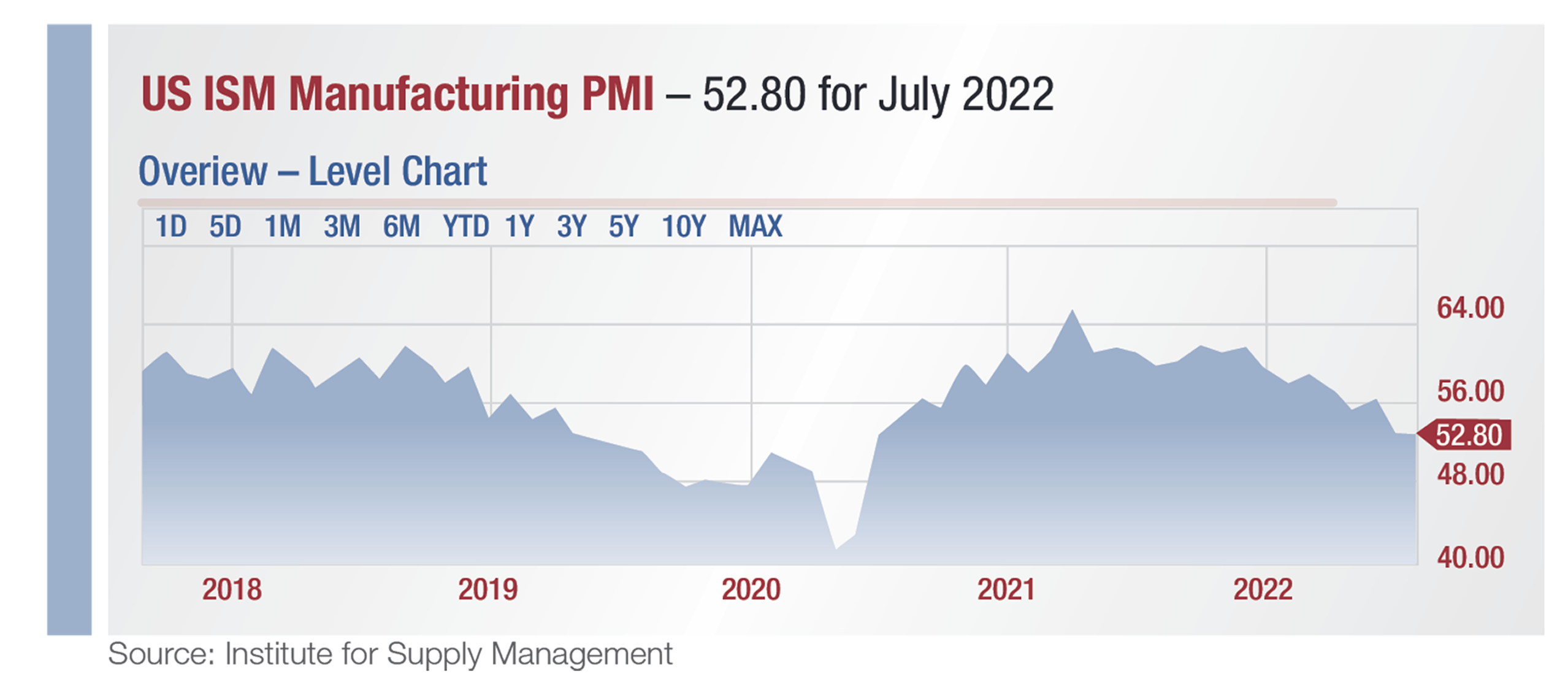
While recessions are usually about too much supply and too little demand, the opposite is happening now. Consumer savings went up during the pandemic, and now savings levels are falling because people are spending. Increased spending is fueling job growth, but in the face of inflation, will spending level off?
We’re not starting from square one
With Covid-19, we’ve just gone through the most uncertain period since the recession in 2008 — yet the economy and the workforce remained resilient. Part of the reason we may not be plunging into a recession right now is that employers have been more planful and workers have more leverage.
4 Workforce Truths
Regardless of whether or not we enter a recession, it pays to keep some essential truths in mind.
With more than 70 years of experience serving and advising business leaders and HR professionals through all kinds of economic environments, we gathered the expertise from our workforce experts to help leaders like you prepare for what’s ahead.
1. Demographics don’t lie
As a whole, we have been trending to come up short on the workers we need for years. ManpowerGroup’s 2022 Talent Shortage research reveals that 74% of U.S. employers report “some” to “a lot of” trouble finding the skilled talent they need, a 10-year high. This is reflected in the continuing low unemployment figures. The other factor to consider is that by 2040, it is projected that about one in five Americans will be age 65 or older, up from about one in eight in 2000. Even in a recession, a major improvement in labor rate participation is not anticipated because of demographics.
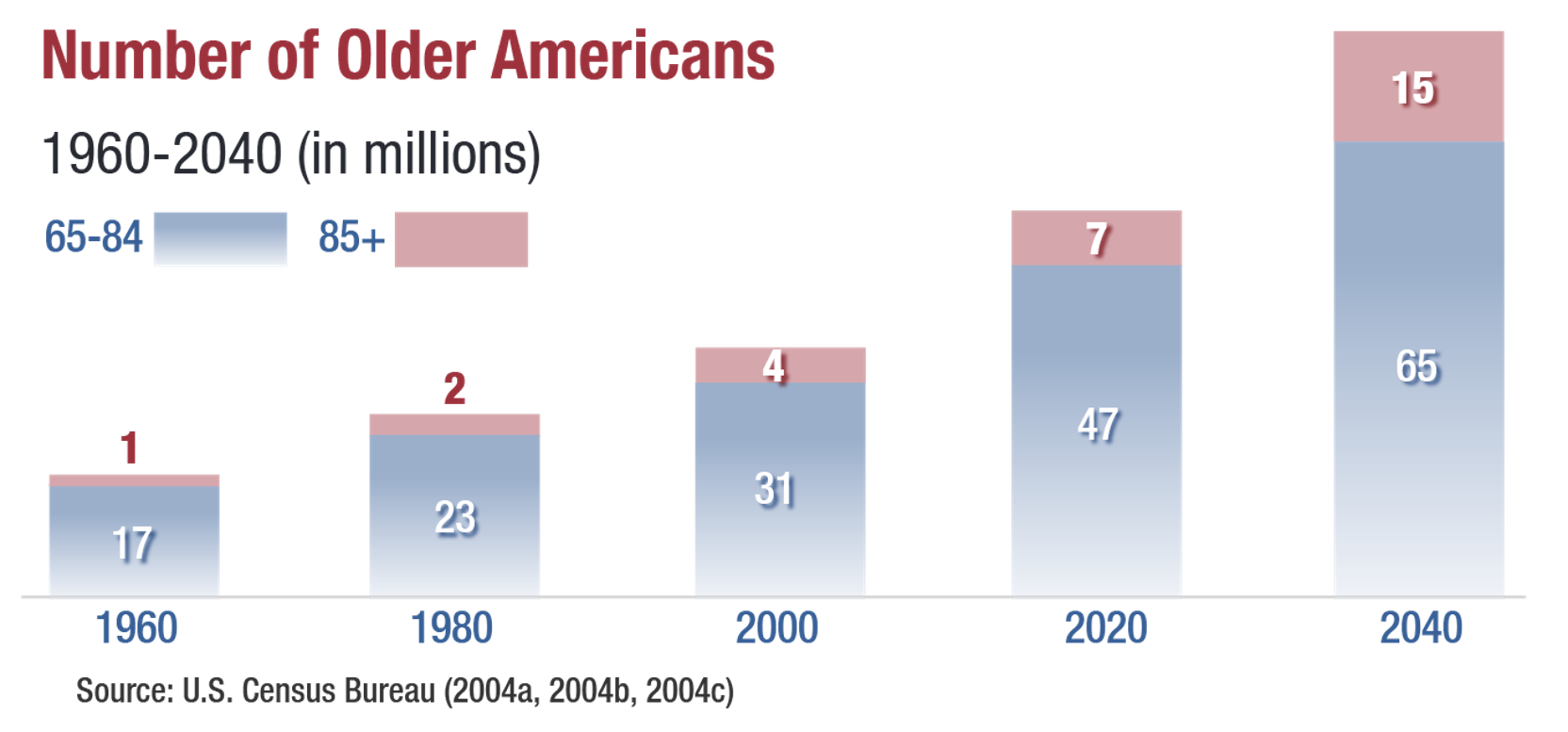
2. Jobs evolve
The jobs, they are a changin’ (all apologies to Bob Dylan). Our latest Talent Shortage survey shows that 3 out of 4 U.S. employers are having difficulty finding the talent they need. Part of this is related to acceleration of new technologies and the lack of skilled talent to operate in these environments. To meet the demand, organizations have to think beyond simply “buying” talent, and develop a buy, build, borrow, and bridge strategy that will enable them to act quickly as the demand arises.
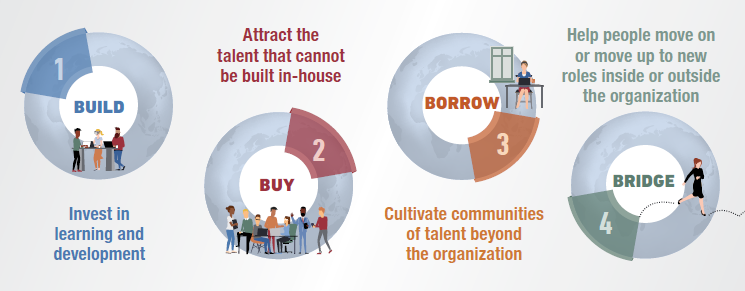
3. Growth and innovation are driven by talent
As the world is finding that technological innovation is outpacing the race to develop skills, it is critical to invest in upskilling and training to grow the skills of your people faster to close the skills gap. It’s not enough to hire people with the right skills for today; you need to be clear on how you will balance your strategy around your future talent – what is the right mix of buy, borrow, build or bridge?
4. Growth follows recession
Whether it’s a short cycle or a long cycle, whether followed by slow growth, or medium or fast, growth tends to follow a recession. And those organizations who win will be the ones who were clear on what drives that growth — innovation and productivity and downright scrappiness — all people-driven. Trying to figure out the landscape and where you win is still dependent on those with the right skills — and on those individuals feeling developed and valued even while weathering the bumps along the way.
According to ManpowerGroup’s latest What Workers Want research, employees across all sectors, at all levels, are demanding more choice and autonomy over when they work; choosing start and end times to their working days, and being offered choice over shift patterns to fit around individual needs.
Employer Watch-Outs
Although the path ahead may be unclear, there are some wrong turns and dead-ends you’ll want to avoid. Here are a few things to keep in mind:
• In the eyes of workers, there’s no going back.
Don’t be fooled into thinking your organization can revert fully to the way things were. Covid-19 forced employers to be more flexible and more agile, re-framing the ways in which they had thought of flexibility around location and schedules. This delivered a benefit to workers that they’re not going to be quick to let go of.
When we asked workers in 2019 (pre-pandemic) how important flexible hours and flexible work location (i.e., Work from home) were to keeping them at their job, only a few groups considered those factors at or near the top of their list – GenX men ranking flexible work hours at #2 and Boomer women ranking flexible work location at #2. Post-pandemic, we’re seeing flexibility rise to the top for all, transcending gender and age categories. In fact in 2022, 92% of respondents now see flexibility in work hours or location as important to their working lives.
While a more balanced employee-employer dynamic may emerge in the coming year, hold on to the positive, popular changes you’ve made in your organizations based on your employees’ feedback, including flexible schedules and remote work options.
• Don’t assume your workers will stay.
The Covid-19 pandemic and all that came along with it led to the Great Resignation, with most organizations tackling incredibly complex and resource-intensive tasks with less. And coming off 2019-2022, your workforce may be exhausted. A message of “work harder,” will not resonate or motivate; nor will a return to inflexible schedules. It’s important to note that the quit rate hasn’t changed appreciably in over a year and remains high. It came in at 2.8% in June 2022, the same rate as June 2021, at the height of the Great Resignation. Recession or not, remember that your most talented may be the most impacted by decisions to go back to pre-pandemic norms. With talent and skills in short supply, these people will have options, even if the unemployment rate jumps.
• Purpose matters (even more) to people.
And you don’t actually need a huge budget for that. What you do need is clarity, both on the purpose of your organization, and on the purpose that work serves in people’s lives. Start with the big question: why do people work? And not just “work” but really go through walls for you? If you understand this, you’ll have all the marbles. It’s been said that Millennials and Gen Z workers are too purpose-focused. However, in our What Workers Want survey, 74% of respondents — of all ages — cited the importance of finding meaning in their day-to-day work. Activate this purpose and you can create a juggernaut effect that will power innovation and growth.
ManpowerGroup recently conducted research that found that of workers in the U.S.:
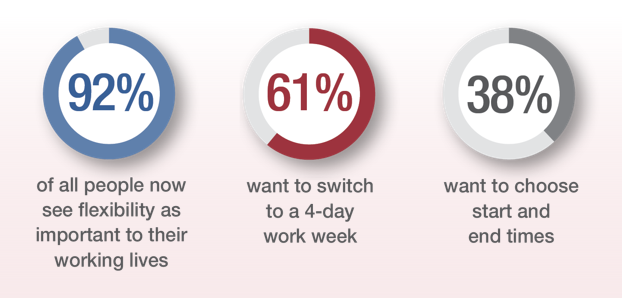
Focus On What Matters:
4 Things You Can Be Doing Right Now
Above all, you need an adaptable strategy that considers worker preferences. You need to be prepared to seize growth opportunities as they happen. And that means fine-tuning your workforce strategy so that you can pivot in any direction. Follow these four recommendations:
1. First, calculate your total workforce cost.
In order to be agile and able to pivot your workforce to seize growth opportunities you must effectively manage your workforce costs. The first step in doing so is understanding what those costs truly are. Generally, labor costs make up only about 40% of your total workforce cost. What’s in the rest? That’s where Manpower can help. With our proprietary Total Cost of Workforce Calculator, we go beyond labor costs to reveal what your workforce is truly costing you. It’s only then that you can pivot in a way that doesn’t sacrifice what really matters in your workforce strategy and to your talent. We can help you manage the cost and help you navigate the hidden costs that are holding you back.
2. Think about what workers want and prioritize addressing their pain points.
While higher compensation continues to be at the top of the list for workers, and a motivator for them to jump to a new opportunity, there are other factors that heavily impact a worker’s satisfaction. Addressing these factors can help you create a work environment that not only attracts new, great talent, but also motivates your current star performers to stay.
As the dynamic of work and life continue to evolve, employees want more from their employer in the way of leadership. Workers want workplaces with supportive managers (74%) and trusted leaders (71%) that offer more flexibility, autonomy, trust, coaching and development.
Take this knowledge and apply it to your workforce strategies to create the kind of workplace workers are clamoring over each other to get into.
3. Focus on retaining critical talent and adding flexibility.
To remain resilient, competitive and achieve market growth, hold on to your best and brightest. Ensure that you retain the critical people and strategic roles that typically hold your organizational knowledge. Then, with more transactional roles, consider applying a heavier contingent workforce strategy that gives you the ability to be agile while preserving your focus on core roles. For help in understanding strategic role types in your workforce mix, use this reference to determine which of your job roles are tactical, transitional, or transformational.
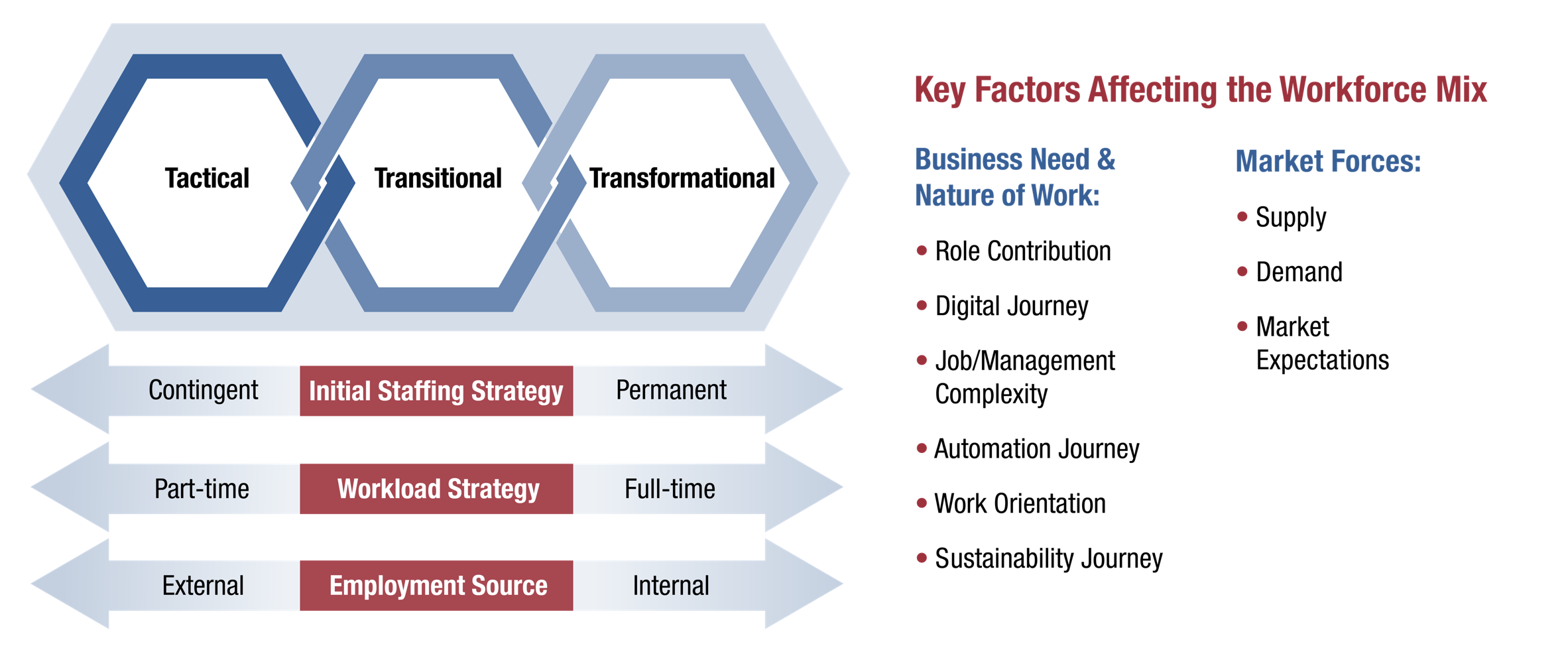
When shifting to more contingent staffing, and with the high unemployment rate that would accompany a recession, the right qualifying processes—including specific education, soft skill, and technical skill requirement —will help you quickly sort through an influx of new job candidates for the best fits.
4. Improve retention through purpose.
Purpose at work and understanding how one’s work contributes to the greater good matters to workers across all generations. How can you best demonstrate that work has purpose? Ask yourself if you have tapped into what really matters for your employees. Regardless of career level or job role, help your people to see a larger purpose in their work. Imbuing a sense of purpose in your workers is important, and it starts with management.
Remember to consider how you are/are not factoring contingent talent into your talent planning. Those who show
promise should be considered a critical part of your talent pipeline that should be managed as part of your overall workforce strategy. By the same token, consider that some whole functions of your organization may not be core to your growth/innovation strategy but are core to your revenue. Could these be redesigned/reshaped in conjunction with a service partner?
Will the R word happen?
It’s unclear. And it may appear that the era of workers in the driver’s seat is coming to an end as wages plateau, the cost of living goes up, and talk of a recession may make workers hesitant to leave their jobs. But don’t fool yourself… so far, the labor market isn’t reacting this way. Be smart in how you prepare and navigate your workforce in the coming months to ensure you’re ready for what’s to come.
Managing the total cost of your workforce is about your whole suite of workforce sources - permanent and contingent. Start with our Total Cost of Workforce Calculator. It’s our proprietary tool to enable leaders like you to best optimize their workforce costs beyond wages, benefits and recruitment.
Learn More at manpowergroupusa.com/LowerMyCost





Comments